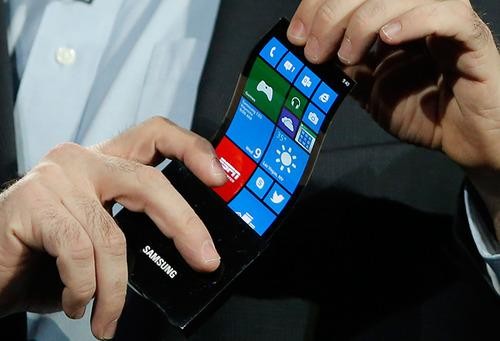
Let’s talk about the coolest substance ever: graphene. It’s one atom thick, (about one-millionth the thickness of a single strand of hair), it’s 100 times stronger than steel, and it conducts electricity like nothing else. It’s a supermaterial that is quietly changing the course of technology.
Here’s why you should get excited about it:
It will turn computers into transformers
It is now being suggested that graphene can be changed into different configurations on the fly by simply manipulating it with lasers. That means that it could take on the form of different computers in just seconds, freeing us from hard-printed, static motherboards. Right now, you carry multiple computers configured for different purposes, partially because their motherboards, printed on hard silicon, can’t do anything other than that for which they were designed. Your smartphone handles a selection of communication and entertainment functions. Your camera is filled with camera-friendly chips. Your game console is heavy on graphics and presentation hardware. Your computer is memory-heavy, able to crunch file structures and complex mathematics.
Graphene, with its perceived infinite laser-configurability as a motherboard, could morph into virtually any kind of computer. Different sheets could handle different functions at the same time in the space of a tiny sheet of paper. Electronics could be improved and updated — even changed completely — remotely. Your smartphone operating system updates and game console software updates are one thing, but imagine if you could download a totally new smartphone to your graphene-based device rather than waiting for Apple to announce it every fall.
More: How to Win Reservations and Influence Waiters
Your batteries will charge in seconds
Researchers at UCLA turned graphene into a battery that charges in seconds and leaves no negative environmental waste behind. Because of graphene’s hyper-conductivity and sensitivity to light, it can be used to store energy — in short, it can become a battery. And because of its minuscule size and flexibility, it charges in seconds.
Your Internet connection will be 1 million times faster
Researchers at Georgia Tech created an antenna that can transfer an entire terabit of data in one second. That’s 1,000 gigabits (a single gigabit is a billion bits). For comparison’s sake, the average U.S. broadband Internet speed is 10 megabits per second. This wireless graphene test was approximately a million times faster than that.
You’ll know your blood composition in real time
Graphene is being studied for uses in medicine, as it could act as a great bioelectric sensor to monitor things like glucose levels, cholesterol, and DNA sequencing. If you think today’s wearables are impressive in the way they monitor heart rate and distance traveled, just imagine what graphene will be able to monitor!
Here’s why you should get excited about it:
It will turn computers into transformers
It is now being suggested that graphene can be changed into different configurations on the fly by simply manipulating it with lasers. That means that it could take on the form of different computers in just seconds, freeing us from hard-printed, static motherboards. Right now, you carry multiple computers configured for different purposes, partially because their motherboards, printed on hard silicon, can’t do anything other than that for which they were designed. Your smartphone handles a selection of communication and entertainment functions. Your camera is filled with camera-friendly chips. Your game console is heavy on graphics and presentation hardware. Your computer is memory-heavy, able to crunch file structures and complex mathematics.
Graphene, with its perceived infinite laser-configurability as a motherboard, could morph into virtually any kind of computer. Different sheets could handle different functions at the same time in the space of a tiny sheet of paper. Electronics could be improved and updated — even changed completely — remotely. Your smartphone operating system updates and game console software updates are one thing, but imagine if you could download a totally new smartphone to your graphene-based device rather than waiting for Apple to announce it every fall.
More: How to Win Reservations and Influence Waiters
Your batteries will charge in seconds
Researchers at UCLA turned graphene into a battery that charges in seconds and leaves no negative environmental waste behind. Because of graphene’s hyper-conductivity and sensitivity to light, it can be used to store energy — in short, it can become a battery. And because of its minuscule size and flexibility, it charges in seconds.
Your Internet connection will be 1 million times faster
Researchers at Georgia Tech created an antenna that can transfer an entire terabit of data in one second. That’s 1,000 gigabits (a single gigabit is a billion bits). For comparison’s sake, the average U.S. broadband Internet speed is 10 megabits per second. This wireless graphene test was approximately a million times faster than that.
You’ll know your blood composition in real time
Graphene is being studied for uses in medicine, as it could act as a great bioelectric sensor to monitor things like glucose levels, cholesterol, and DNA sequencing. If you think today’s wearables are impressive in the way they monitor heart rate and distance traveled, just imagine what graphene will be able to monitor!




Comment